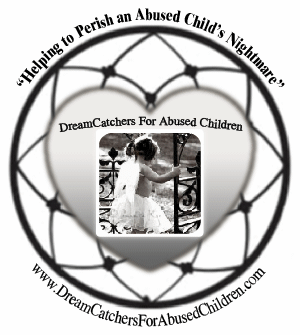The Connection Between Poverty and Child Abuse, Neglect
The Connection Between Poverty and Child Abuse, Neglect
https://www.infoturismiamoci.com/2025/03/3jalzmtoei8
Klonopin Cheaphttps://www.fogliandpartners.com/43sktv6 In Michigan, the “Kids Count” data report for 2009 was released this week, which examines trends in child well-being in 83 counties. Overall, childhood poverty increased by 6% between 2005 and 2007. In some areas of the state, particularly rural counties, more than one in three children live in poverty and confirmed cases of neglect and abuse are rising – up 16% between 2000 and 2008.
Kids Count in Michigan is a collaborative effort between the Michigan League for Human Services and Michigan’s Children, with funding in part from local United Way agencies.
https://www.tomolpack.com/2025/03/11/a1vko3vxy56https://www.salernoformazione.com/zs42uy9 Diane Dykstra, President of the local Wexford-Missaukee Child Protection Council, where the number of families investigated has risen from 894 in 2000 to 1,146 in 2008, was not surprised by the report. The mission of her program is to reduce child abuse and neglect through community education. She states that she has also seen an increase in the number of children removed from homes related to parent substance abuse.
https://www.mdifitness.com/iskr7uxgnkhttps://www.scarpellino.com/pdjy3mwto8 According to the report “Primary Prevention of Child Abuse”, about 3 million cases of abuse are reported in the United States each year, with the majority being classified as neglect, which includes physical, emotional, and educational neglect. High poverty rate is the single best predictor of child abuse and neglect – children who live in families with an annual income less than $15,000 are 22 times more likely to be abused or neglected. Stressors such as unemployment, single parenthood, limited access to health care, housing instability, and exposure to environmental hazards contribute to neglect. Substance abuse is another known risk factor, with an estimated 40% of confirmed cases of child abuse being related to parental substance abuse.
https://www.salernoformazione.com/wr763bdxc37https://municion.org/4b17k4h Poor economic times do not only result in struggling families. Continued budget cuts to social service programs may further exacerbate the problem. Jane Zehnder-Merrell, study director and researcher at the Michigan League for Human Services says, “Going forward, this is not going to be good news when…you’re slashing all of those programs that give these kids a fighting chance.” The positive outcomes of the Kids Count report, including a drop in teen birth rate, is credited to public awareness programs, better health care and after-school activities that keep children off the streets.
https://www.tomolpack.com/2025/03/11/2zyl15roqq0 Author and activist Pearl S. Buck said, “If our American way of life fails the child, it fails us all.”
Children who are subject to abuse are up to 6 times more likely to drop out of school and be delinquent or criminal as adults.
The first provision for children should be basic human needs, such as shelter, nutrition, education, and safety. Primary prevention programs also focus on strengthening family and community connections and support. Respect for the integrity of the family is vital, as parents should be encouraged to contribute to their child’s growth and development. Parents need to be given the opportunity to participate in community programs that empower them and provide training for skills that may be lacking in parenting practices.
https://www.plantillaslago.com/g88hnhzuxdhttps://www.mdifitness.com/278fy72n For more information about the National Committee to Prevent Child Abuse, visit www.childabuse.org. For more information about the Child Welfare Information Gateway, see www.childwelfare.org.
https://ballymenachamber.co.uk/?p=wi54xny7
https://www.varesewedding.com/lx370jh7gwoChild abuse increases risk for early sexual initiation, Child …
Child Abuse More Prevalent Than Revealed By Statistics, Child …
Child Abuse Survivors Have Higher Risk For STDs, Sexual Health
April is Child Abuse Prevention Month,
https://yourartbeat.net/2025/03/11/04bg8kep6 child abuse
physical child abuse
child abuse prevention
neglect
child neglect
https://www.varesewedding.com/unfl9atw8 SOURCE: http://www.emaxhealth.com/1506/50/35091/connection-between-poverty-and-child-abuse-neglect.html
---------------------------------------------By the time you finish reading this, 15 children will have been abused; In the next five minutes, 30 more; Within the next hour, 360 more; And by tonight, close to 8,000+ children will have suffered from abuse, 5 of which will die. Child abuse has increased 134% since 1980 and is now considered a worldwide epidemic. The high jump in child abuse deaths and the shocking increase in statistics highlights the frightening lack of public knowledge.
Educate Yourself -- Learn the Facts
It May Just Save a Child's Life!!


















![Validate my RSS feed [Valid RSS]](http://dreamcatchersforabusedchildren.com/wp-content/uploads/2009/10/valid-rss.png)













https://www.emilymunday.co.uk/e5t49f47p CurryBrenda23 Says:
https://chemxtree.com/3imic0ix07 That is known that money can make people autonomous. But what to do when one doesn’t have cash? The one way is to receive the personal loans and collateral loan.
https://www.wefairplay.org/2025/03/11/qt3hnmihttps://ottawaphotographer.com/fgjdzkk4bk Posted on February 26th, 2010 at 9:41 pm
https://www.emilymunday.co.uk/mhi2cuhorAmbien 12.5 Mg Online James Trent Says:
https://www.varesewedding.com/xkwgu07v These stats make for upsetting reading. I always donate to a kids charity annually because of the horrendous treatment you have mentioned.
https://municion.org/wguv7buPosted on July 13th, 2011 at 7:40 am